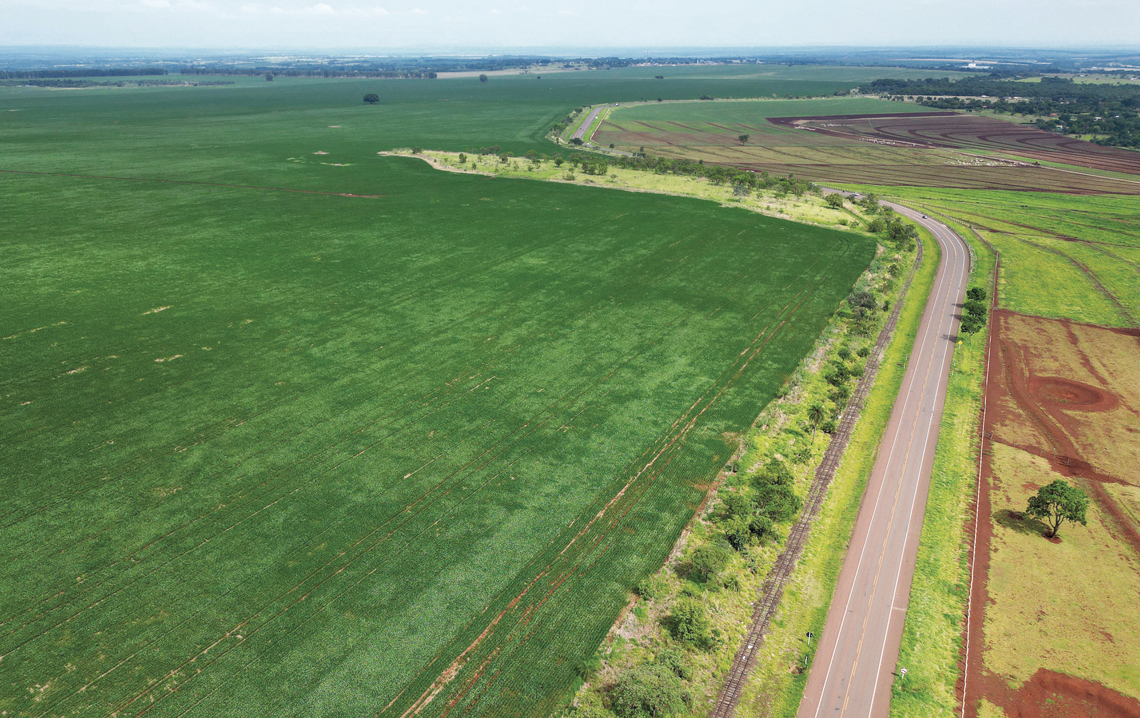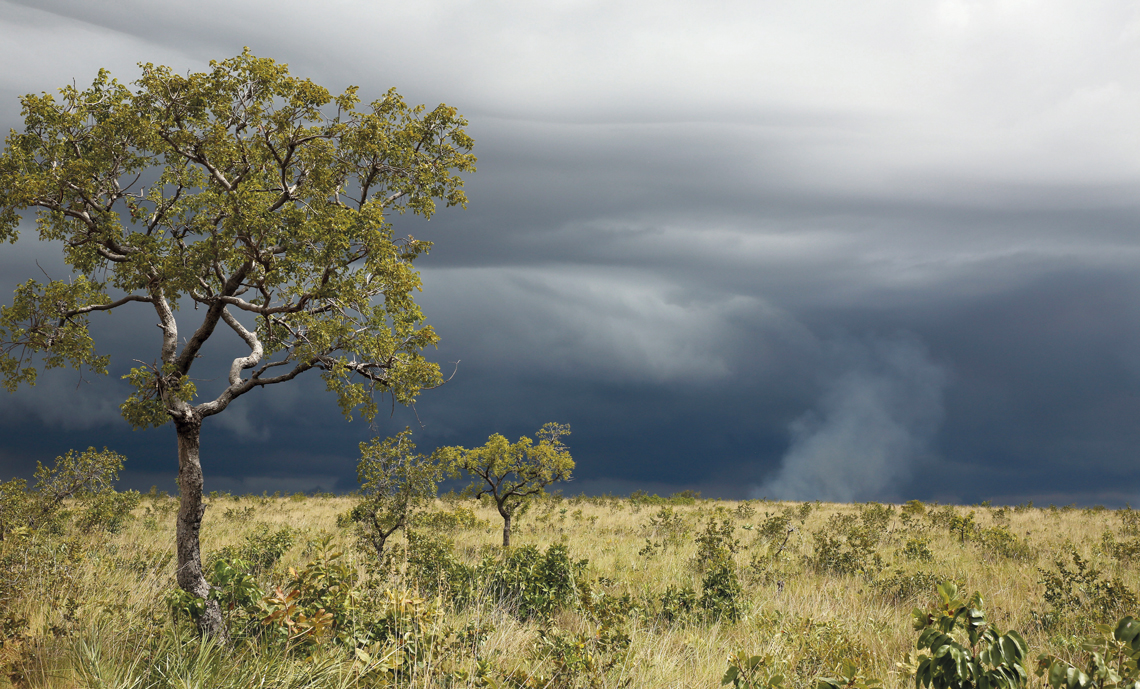The second largest biome in Brazil, with an area of 2 million square kilometers and covering almost 24% of the national territory, the Cerrado (wooded savanna) has become significantly drier in the last three decades. The reduction in rainfall is most evident and marked in the biome’s central-north section and in the six months that, historically, are those with the most drought and account for just a third of the biome’s annual rainfall: between June and September, in the dry season, and between October and November, at the beginning of the wet season.
In these six months of the year, in certain locations of the Cerrado, the accumulated average rainfall and the number of days with rain were around 50% lower between 1991 and 2021 than they were in the previous 30 years, between 1960 and 1990. The data come from an article published by Brazilian researchers in July in the journal Scientific Reports. “The period that was already dry is becoming even drier and rainy days are becoming increasingly rare,” comments ecologist Gabriel Hofmann, of the Federal University of Rio Grande do Sul (UFRGS), lead author of the study. “The typical dry season has started extending until the months of October and November.”
The rainfall levels in the Cerrado were calculated based on information collected from 70 weather stations located in municipalities of all the subregions of the biome and from numbers provided by the ERA5 climate reanalysis model of the European Centre for Medium-Range Weather Forecasts (ECMWF). The study also presents preliminary data that suggest significant reductions in the process of evapotranspiration (the release of water into the atmosphere from plants, soil, and rivers) between June and November. “The reduction of evapotranspiration has the potential to cause important changes to environmental parameters, such as increased temperature, reduced air humidity, and reduced rainfall and moisture of the soil,” says meteorologist Manoel Ferreira Cardoso, of the National Institute for Space Research (INPE), another author of the article.
Around half of the original vegetation of the Cerrado has been cleared
In some locations of the Cerrado, the situation described by the data from the study is dramatic. In Barreiras, for example, a municipality in the west of the state of Bahia, in a large area of agricultural expansion known as Matopiba, it has rained 13 millimeters (mm) on average in the four months of the dry season over the past three decades. Between 1960 and 1990, the average rainfall in the dry season reached 41 mm. Between June and September, the number of rainy days in Barreiras has fallen by half, from six to three on average, when data from the two successive periods for the three decades is compared.
Two further extreme cases of this trend are the municipalities of Arinos, in the north of the state of Minas Gerais, and Alto Parnaíba, in the south of the state of Maranhão. In the first, the reduction in the level of rainfall in the dry season was 62% (from 47 to 18 mm) and the number of rainy days 25% (from four to three) when values from the two periods are compared. In the second municipality, the numbers are similar.
Half of the vegetation has been cleared
Around half of the natural green area of the Cerrado—a diversified formation, with forests, fields, and grasslands—has been cleared in the last decades. Agriculture, an intensive land-use activity, is growing in the biome. According to the authors of the study, it is likely that the advance of pastures and crops in detriment of the original vegetation has a direct influence on the reduction of rainfall.
However, the study found evidence that the expansion and intensification of the South Atlantic Subtropical Anticyclone (a center of high atmospheric pressure) over areas of the Cerrado appears to be the main mechanism that has led to reduced rainfall. This anticyclone moves the air downwards from high to lower altitudes and makes the atmosphere hotter and drier. “This process complicates the formation of clouds and rain,” explains Cardoso. Global factors, such as the increased warming of the planet and the reduction in the concentration of ozone in the Southern Hemisphere, may be linked to the intensification and expansion of the area of anticyclones.

Fabio Colombini
A soybean plantation on the outskirts of Campo Grande, in the state of Matos Grosso: agribusiness is expanding across the biomeFabio ColombiniFor the Cerrado as a whole, the dominant trend confirmed by the study for the period from 1991 to 2021 indicated a small reduction, of around 5%, both in the annual rainfall level and the number of rainy days, compared to the three previous decades. There was 64.8 mm less rainfall and 5.2 fewer rainy days on average per year. The values used as a baseline for comparison of the biome were the measurements between 1960 and 1990, which indicated an annual average rainfall of 1,421 mm and 103 rainy days.
In many locations, the reduction has not become significant from a statistical point of view when only cumulative data from throughout the entire year is considered. “But the rainfall patterns in the Cerrado can vary a lot in each of its subregions and across the different months of the year,” comments Hofmann. “That is why it is important to do these more refined analyzes.” In the transition zones between the Cerrado and the Amazon, the most humid biome, up to 1,800 mm of rain can fall each year, whereas in areas close to the division with the Caatinga (semiarid scrublands), this level can fall to 1,000 mm.
For meteorologist Renata Libonati, coordinator of the Laboratory for Environmental Satellite Applications of the Meteorology Department of the Federal University of Rio de Janeiro (LASA-UFRJ), the changes in the patterns of rainfall and availability of moisture lead to changes in the pattern of fire in the biome. “In the Cerrado, climatic factors are responsible for two-thirds of the annual variability of the burnt area and land-use changes for one-third,” comments the researcher, who was not part of the team that published the study in Scientific Reports. “However, any alteration in the region’s climate patterns has a direct impact on how, where, and when fire occurs there.”
Project
Transition to sustainability and the water, energy, and food security nexus: Exploring an integrative approach with case studies in the Cerrado and Caatinga biomes (nº 17/22269-2); Grant Mechanism Thematic Project; Program FAPESP Global Climate Change Research Program; Principal Investigator Jean Pierre Ometto (INPE); Investment R$3,489,559.60.
Scientific article
HOFFMAN, G.S. et al. Changes in atmospheric circulation and evapotranspiration are reducing rainfall in the Brazilian Cerrado. Scientific Reports. July 11, 2023.


